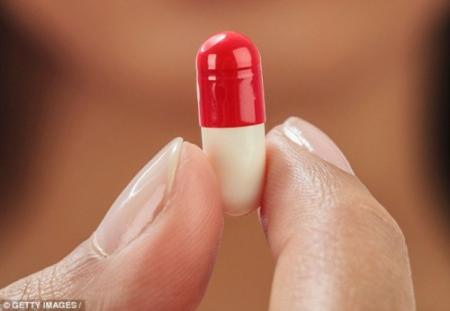HWN Jobs
- JOHN SNOW INC (JSI) JOBS
- ULTIMATE HEALTH MANAGEMENT SERVICES LIMITED (HMO) JOBS
- ABUBAKAR TAFAWA BALEWA UNIVERSITY (40 SLOTS) JOBS
- CHIEF EXECUTIVE OFFICER JOBS AT THE MAC TAY GROUP
- THERAPEUTIC LABORATORIES NIGERIA LIMITED JOBS
HWN Blogs
- Classical heart healthy foods on HWN BLOGS
- Classical Warning Signs When The Human Liver Begins To Fail on HWN BLOGS
- Myths About Hygiene, Soaps, Germs, Sweat and Smell on HWN BLOGS
- Hernia does not heal on its own on HWN BLOGS
- Classical Essential Oils That Improves Focus Cum Memory on HWN BLOGS
news - Cure For Diabetes Finally Arrives on HWN DIABETES UPDATE back to all News
Cure For Diabetes Finally Arrives on HWN DIABETES UPDATE

An insulin pill that will save millions of people with diabetes having to administer daily jabs is a major step closer to reality.
Around 420 million people worldwide have diabetes and 3.7 million deaths are attributed to the disease each year, World Health Organisation figures show.
There are two types of the disease, which is caused by high levels of sugar circulating in the blood, causing organ damage which can be fatal.
Type 1 is an autoimmune disorder normally diagnosed in childhood, while type 2 normally diagnosed later in life – and largely associated with being overweight and inactive.
Everyone with type 1 diabetes has to inject themselves with insulin daily.
For those with type 2 diabetes, lifestyle changes and drugs may initially help lower blood sugar levels, but if the disease progresses some patients also have to inject themselves with insulin.
The daily injections can be invasive but now, scientists believe they may have discovered a less painful way of administering the hormone.
They are developing a new way of delivering the medicine orally using tiny vesicles that can deliver insulin where it needs to go, without a jab.
These new vesicles are made of naturally occurring lipid molecules, which are normal building blocks of fats.
The lead author, Professor Mary McCourt, of Niagara University, New York state, said: ‘We have developed a new technology called a Cholestosome.
A Cholestosome is a neutral, lipid-based particle that is capable of doing some very interesting things.
She said the the biggest hurdle to delivering insulin orally is ushering it through the stomach intact.
Proteins such as insulin are no match for the highly acidic environment of the stomach.
The lead author, Professor Mary McCourt, of Niagara University, New York state, said: ‘We have developed a new technology called a Cholestosome.
A Cholestosome is a neutral, lipid-based particle that is capable of doing some very interesting things.
She said the the biggest hurdle to delivering insulin orally is ushering it through the stomach intact.
Proteins such as insulin are no match for the highly acidic environment of the stomach.
They degrade before they get a chance to move into the intestines and the bloodstream – where they are needed to lower blood glucose levels.
One approach to overcoming the problem is to package insulin inside a protective coating to shield the protein from stomach acids.
It is currently being tested in clinical trials.
Another company developed and marketed inhalable insulin, but despite positive reviews from some patients, it did not take off.
Professor McCourt’s team have developed a new approach.
Using the patented Cholestosomes developed in the lab, the researchers have successfully encapsulated insulin in a coating made of fat, which protects it so it can get through the digestive system into the bloodstream.
The new vesicles are made of naturally occurring lipid molecules, which are normal building blocks of fats.
They are unlike other lipid-based drug carriers, called liposomes, researchers said.
Dr Lawrence Mielnicki, of Niagara University, said: ‘Most liposomes need to be packaged in a polymer coating for protection.
Here, we’re just using simple lipid esters to make vesicles with the drug molecules inside.
Computer modelling showed that once the lipids are assembled into spheres, they form neutral particles resistant to attack from stomach acids.
Drugs can be loaded inside, and the tiny packages can pass through the stomach without degrading.
When Cholestosomes reach the intestines, the body recognises them as something to be absorbed.
Source: Edliner, HWN Africa.
: 2016-09-24 19:06:21 | : 1428
HWN News
- First Polish infant to survive on extreme dialysis on HWN MEDICAL MIRACLES
- Drug resistant tuberculosis end game on HWN INSIGHTS
- Too many women opting for caesarean sections (CS) to give birth on HWN SEX EDU
- The intelligent, strong and fearless Nurse that conquered Ebola on HWN ARCHIVE
- Medhi Benatia, down with injury on HWN SPORTS






